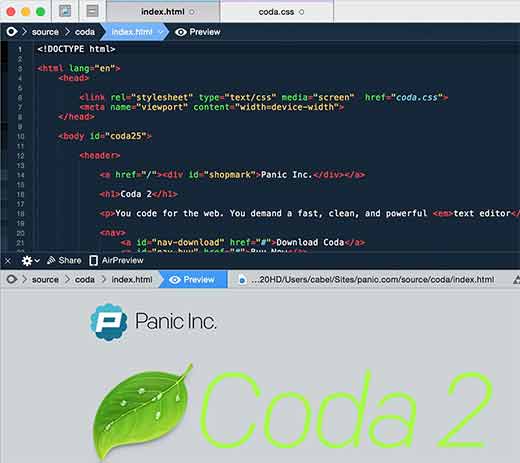
You can also enable an option which will display a visible glyph next to wrapped lines. With word wrap enabled, lines which exceed the width of your source editor view will automatically wrap to the next line within your source file. To enable word wrap, navigate to Visual Studio > Preferences > Text Editor > Word Wrap:

Word wrap is disabled by default but can be enabled via Preferences in Visual Studio for Mac.

#SOURCE CODE EDITOR FOR MAC FULL#
Word wrap can also ensure that your code view contains the full contents of your source file even when opening panes that may obscure your view or reduce the width of your source view. Word wrap can assist you in managing space when working on long lines of code or with limited view space. This menu item can also be used to enable or disable code folding. You can also switch between showing and hiding the folds by using the View > Folding > Toggle Fold / Toggle All Folds menu item: To show or hide sections, use the disclosure widget next to the line number:

This menu also includes the option to fold #regions and comments by default, displaying a named hint, in place of code. To turn on code folding, navigate to Visual Studio > Preferences > Text Editor > General > Code Folding:
#SOURCE CODE EDITOR FOR MAC FOR MAC#
Code folding is turned off by default in Visual Studio for Mac Code foldingĬode folding makes it easier to manage large source code files by allowing developers to show or hide complete sections of code, such as using directives, boilerplate code and comments, and #region statements. The following sections describe some of the highlights. Visual Studio for Mac offers many powerful features to make cross-platform development as accessible and as useful as possible. Exactly how you decide to view and maintain code is a personal decision, which varies between developers - and often between projects. Viewing and moving efficiently throughout code is an integral part of the development workflow. This article introduces some of the key features of the source editor and explores how you can use Visual Studio for Mac to be as productive as possible. The source editor in Visual Studio for Mac allows for a seamless experience with all the other functionality in the IDE such as debugging, refactoring, and version control integration. The source editor provides features that you might expect and need to do your work with ease: From the basics such a syntax highlighting, code snippets, and code folding, to the benefits of its Roslyn compiler integration, such as fully functional IntelliSense code completion. Visual Studio for Mac provides a sophisticated source editor that is at the center of your interactions with the IDE. One of them, called Extract for Brackets, already comes integrated in the app, and lets you export the formatting information to a PSD file for Photoshop, even though you need to create an Adobe account to do it.A reliable source editor is essential for writing code succinctly and efficiently. It's functionalities can also be expanded by using extensions from third parties. One of the most interesting features it has is the dynamic preview mode, in which you can open your project on a browser and see every modification you do in the source code in real time. You can organize all the elements in your project in a category tree, where the code and graphics are integrated. It can automatically detect code to help you with the writing, indentation, and coloring to identify segments. It's an open source application that has a clear interface. It offers different tools to make the process of web creation faster, and improve the conversion from the graphic editor to its interpretation in the language used. Brackets is a code editor for HTML, CSS, and JavaScript, developed by Adobe, and it tries to take that road.

One of the roads to take in modern web development is unifying and creating connections between design and implementation.


 0 kommentar(er)
0 kommentar(er)
